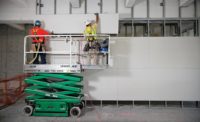As an invaluable resource for informing road map decisions for both new and established products and services, customer feedback helps firms glean insights from the people who matter most. Whether they have 10 customers or 10,000 clients, this feedback helps companies uncover customer pain points, identify the features and functionalities customers care most about, and prioritize product road maps accordingly. Using customer interviews, usability tests, surveys and customer advisory boards—the top four tools according to a recent UserVoice survey—companies can get the good, the bad and the ugly on what they’re doing and on what they need to be doing better.
Constantly challenged to stay ahead of their competition by designing, developing and launching products that will sell successfully in their markets, building product manufacturers must be able to innovate effectively, using solid, honest customer feedback to get product development correct. In this article, we’ll explore one effective method to draw out innovative ideas from customer communities and then leverage that information into business success.
Creating a Closed-Loop Feedback Process
Product teams put a lot of time into collecting and managing customer feedback, and, as products mature, invest even more time into garnering and utilizing that feedback. The problem is that most product teams lack a consistently effective process for closing the customer feedback loop. As a result, they often miss out on the key benefits of a closed-loop feedback process.
Fails Management Institute - or FMI - often witnesses how building product manufacturers think they’re listening to their clients, but in reality, they rarely do an effective job during this part of the customer feedback process. Gathering the right feedback is difficult, but understanding how to take action on that feedback is an extremely difficult, yet critical, step in the product innovation loop. Here are some key challenges:
Honest feedback doesn’t always go over well.
Product development or marketing departments may not want to hear the truth. Instead, they may protect the product they have worked hard to develop. After all, negative feedback can make them look bad and set them back on product launch schedules.
Asking the right questions is critical.
Figure this out early, and the overall customer feedback process will be much more successful. Focus only on the most important questions.
Marketing and product development teams aren’t always the best ambassadors.
The customer may tell you what you want to hear, and you may be tempted to ask leading questions. Honest customer feedback requires the right environment and the right questions; set up a customer council and bring all participants to your location to contribute in a group council setting.
The wrong things may be incentivized.
Asked to launch a certain number of products per year, the product development team that receives negative input on a new product in the development stage may take a hit when annual bonuses are handed out (e.g., if the number of products launched is the metric).
While few would question the importance of customer feedback in the product development process, actually collecting and managing feedback is a necessary but difficult task. Done right, this process leads to rigorous analysis and complements data-driven decision-making. Therefore, it’s in product teams’ best interest to find and embrace efficiencies in feedback collection wherever possible. This will allow them to spend less of their time managing data and more time uncovering insights and understanding their users.
Customer Feedback: Not Just for New Products
On average, companies spend about 12.4 hours a week (or 2.48 hours per day) collecting and managing customer feedback (Exhibit 1). In rating their feedback follow-up effectiveness, 19 percent of companies follow up “sometimes,” 35 percent follow up all of the time, and 44 percent do so most of the time (Exhibit 2).
Regardless of how long a particular product has been on the market, customer feedback should play an important role in the product development process. Building product manufacturers’ product teams should reflect on what aspects of collecting and managing customer feedback are taking up the bulk of their time and then seek out ways to streamline their processes and improve efficiencies.
The problem is that many companies are not engaging customers early enough in the process. Waiting until a product is near completion makes the job of getting customer feedback extremely difficult. If the product is already developed, for example, it’s hard to stop and make changes—and too costly to scrap the product—when that negative feedback starts to surface.
One of the best ways to avoid this challenge is by always putting your customers first. In other words, ideas for new product development should originate from your customer feedback. Companies that invest in developing customer councils, for example, should meet with the customer on a regular basis to solicit input. Doing so ensures that the building product manufacturers’ firm receives the benefits of new product innovations and better success rates with new product launches.
Securing the Voice of the Customer
Many companies have attempted to secure the voice of the customer through councils, meetings, focus groups, peer groups or a variety of other methods. While these may be well-intentioned, what often happens is that the company winds up sending one, or two, or maybe three people (e.g., someone from product development or marketing, and someone from sales) out on a road trip to visit the customer. During those meetings, they’ll show the customer some new product ideas that are already 70 to 80 percent through the product development pipeline.
At that point, the company just wants feedback from the customer; so the representatives take a few notes and basically get the customer to tell them what they really want to hear (i.e., that the product is great). The team may garner a few clues—a color could be better, a pattern could be changed—but it doesn’t gather any open, honest and objective input. To further complicate the situation, they come back to the factory with the information, which basically falls on deaf ears. After all, if the product development phase is already 80 percent complete, those products are going to get launched one way or the other.
This eventually turns into a vicious cycle of irrelevant customer feedback and, subsequently, a very high product failure rate. Put simply, the products don’t sell, so they have to be pulled off the market. Having worked with a large number of building product manufacturers over the years, we’ve found the customer council to be one of the most effective ways to break the cycle and garner useful customer feedback that can be applied in the manufacturing environment.
We’ve experimented with a few different approaches and found the best success with a 10- to 12-person council that meets twice a year (i.e., spring and fall) and that is not set up to be a sales pitch for customers. In most cases, the participants—each of whom will serve a two-year term, for a total of four meetings—will represent key architectural and design firms from various geographies. Get those industry leaders to come to your factory for a two-day meeting, twice a year, to participate in brainstorming sessions, analyze current products and review new products that are currently under development.
When you use a council, you stand the best chances of getting customer feedback in a very open and honest environment. Recently, we worked with a company that set up a council to help reduce its own 65 percent new product failure rate. Two years later, thanks to the customer input and subsequent decision-making, that number dropped to about 40 percent. The cost savings for the manufacturer were astronomical, not to mention the goodwill that its salesforce earned with its own customers (i.e., by bringing better products to market and not having to “drop” products).
Putting Words into Action
It’s not enough to have a pow-wow with your customers and then go back to doing things the way you’ve always done them, or continue down the product development path as if those meetings never took place. To glean the most benefit out of your customer council, you’ll want to gather all the notes that you collected and then use that information to conduct a follow-up debrief with your team the next day. You’ll probably end up with pages and pages of feedback notes to work from. So cull through them for the most important points, and then work with your product development team to start budgeting time and/or money to test out the new, innovative approaches suggested by your customers.
Be sure to discuss both schedule and timeline, and then begin assigning team members to record the progress over the next three to six months or so. If a team member tries to bring one idea to life and fails, for example, be sure to make a note of it (to avoid reinventing the wheel the next time a customer makes a similar request).
Six months later, at the next customer council meeting, share the results of your efforts with attendees. Allocate at least two hours (of the biannual meeting) to this, and use data, photos and sample materials to illustrate your points. “Here’s what we found and here are the results,” you can tell them. “This product turned out to be a great idea, and we have some samples to show you,” or “This one didn’t really make good economic sense, and here’s why.”
After just two council meetings, when those key designers or customers see that your company listened to what they said and took action—and actually worked on developing products or using their input to change products—the magic will begin to happen. The council will come alive and start giving you more ideas and feedback than you ever could have imagined.
As one council participant confirmed, “The most gratifying aspect of being on the design council was the exchange of ideas and information within this diverse group of hospitality experts and seasoned designers. It was wonderful and eye-opening to step out of my own yard and into their worlds.”1
Real Feedback Counts
Anticipating customer needs and then serving those customers well isn’t always easy, but it’s a very necessary part of a building product manufacturers’ mission. To best serve those evolving needs, customer feedback can provide that critical link between wondering what clients want and truly making them a part of the product development process. Knowing that the success rate of new product development can be improved by getting real feedback from customers before the product launch happens, many companies have realized significant cost savings from investing in effective customer councils.
Organizations that regularly follow up on customer feedback win by having a closed-loop, honest feedback process. Organizations that ignore this step risk leaving their customers in the dark, wondering whether their feedback is being used—or even heard at all.
Finally, customer councils can also positively influence the company brand (i.e., when products are not dropped as often), which allows for less customer distraction from product disruption. The salesperson will be motivated and pleased to see that his or her company is investing in getting real customer feedback, and the entire organization will operate in a more profitable and successful manner.








Report Abusive Comment